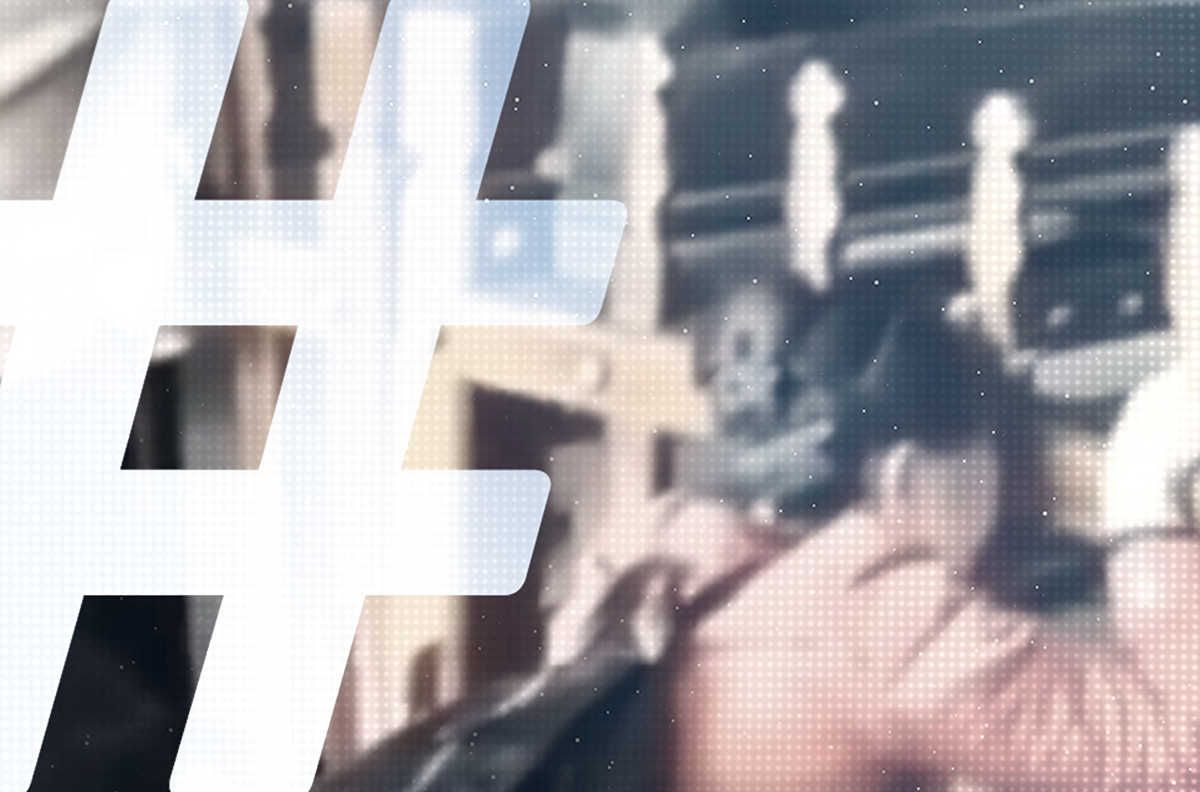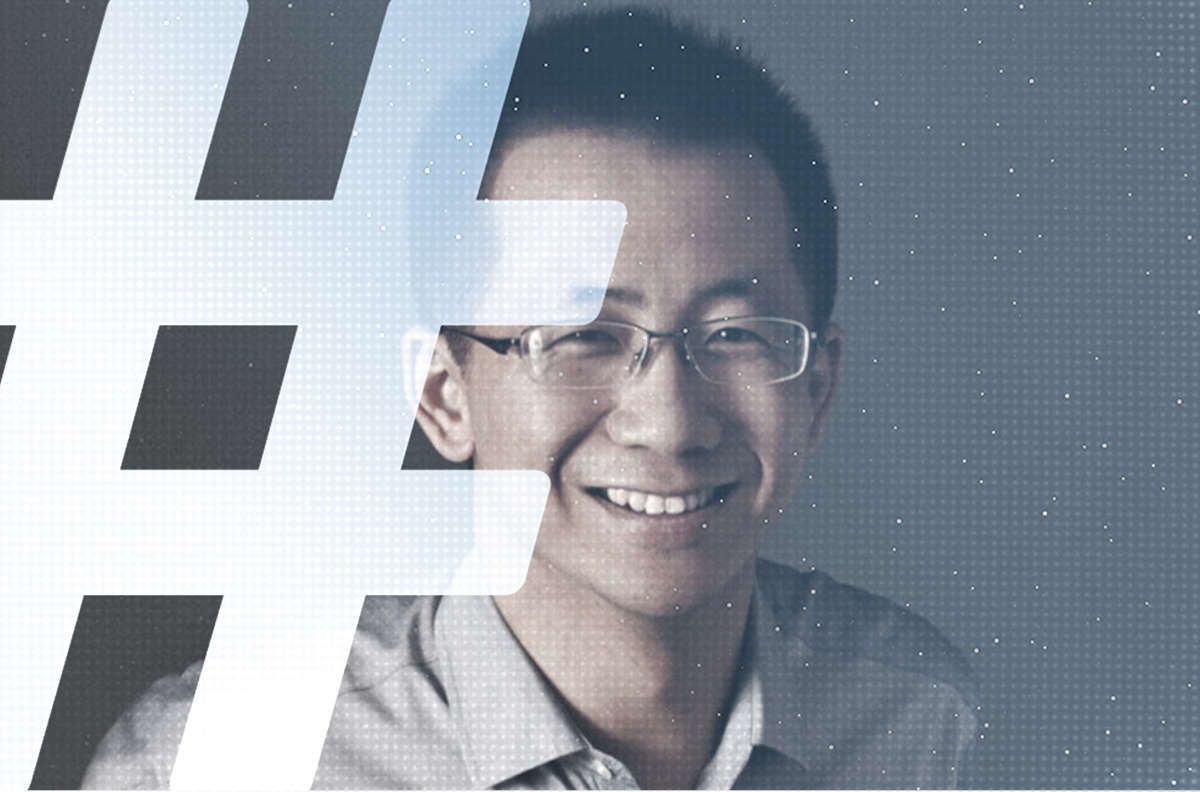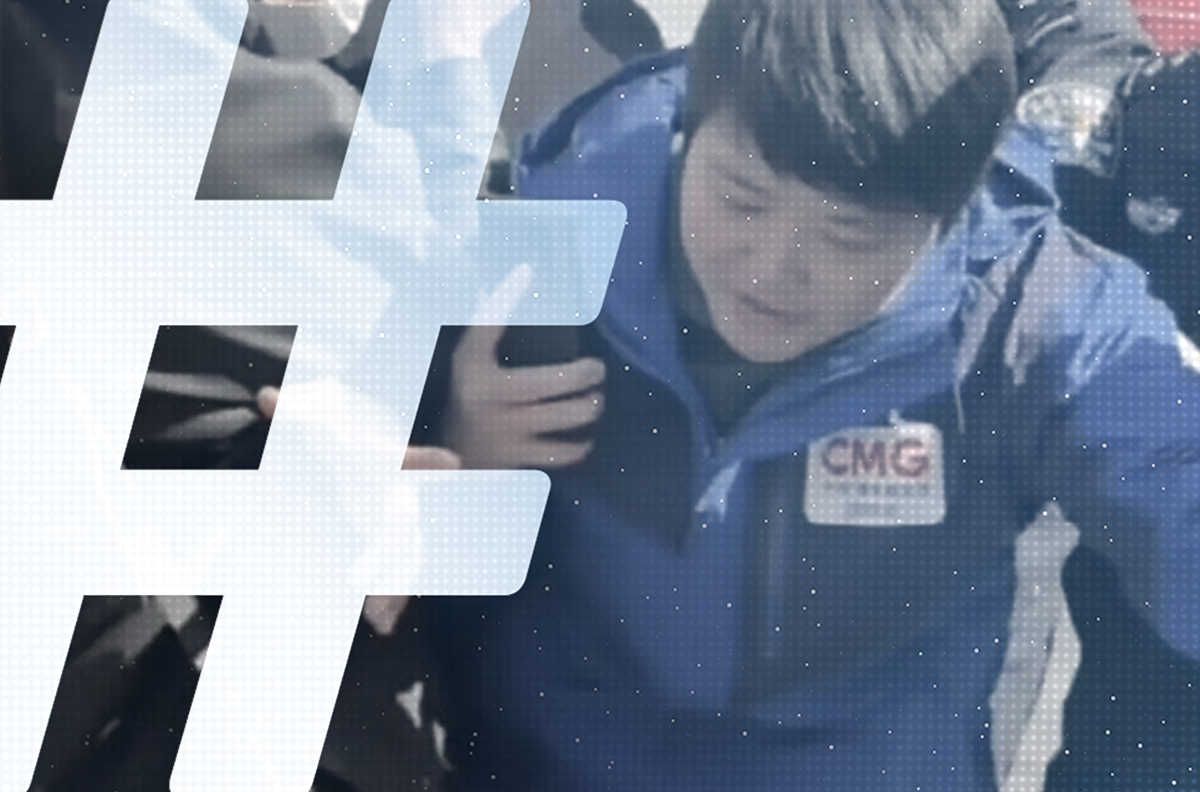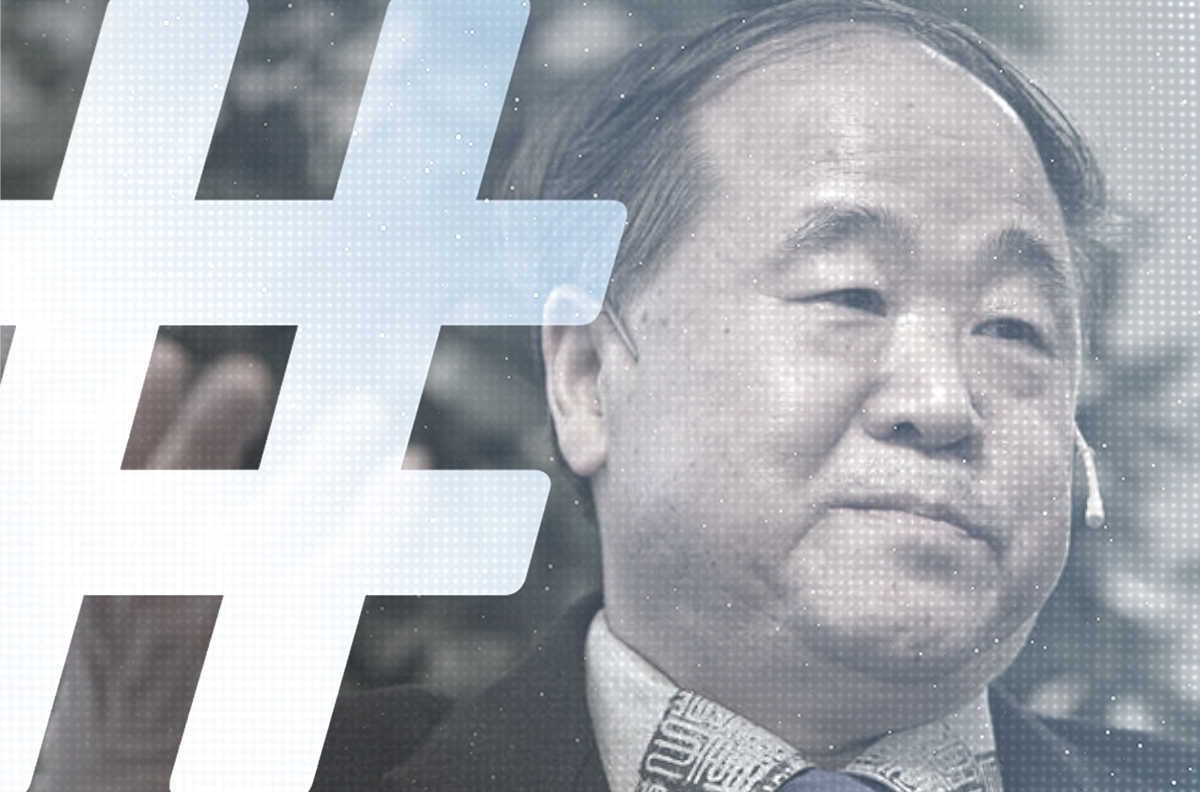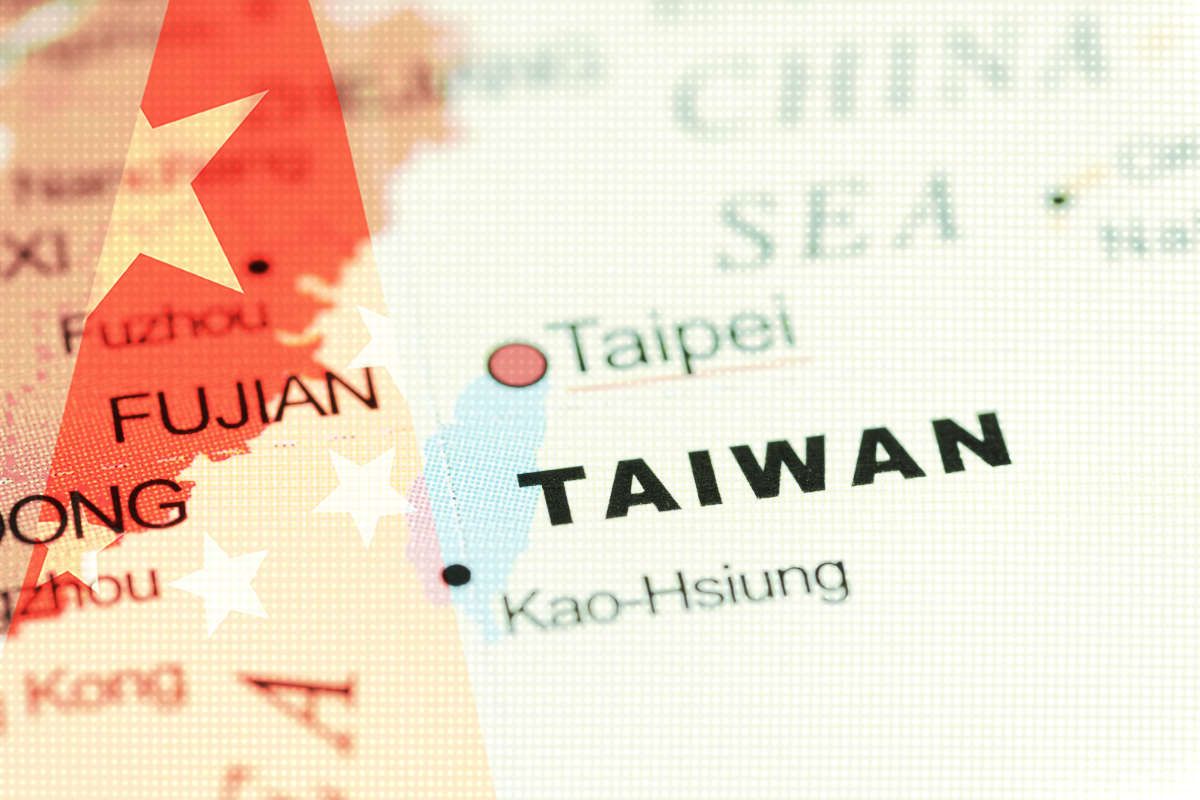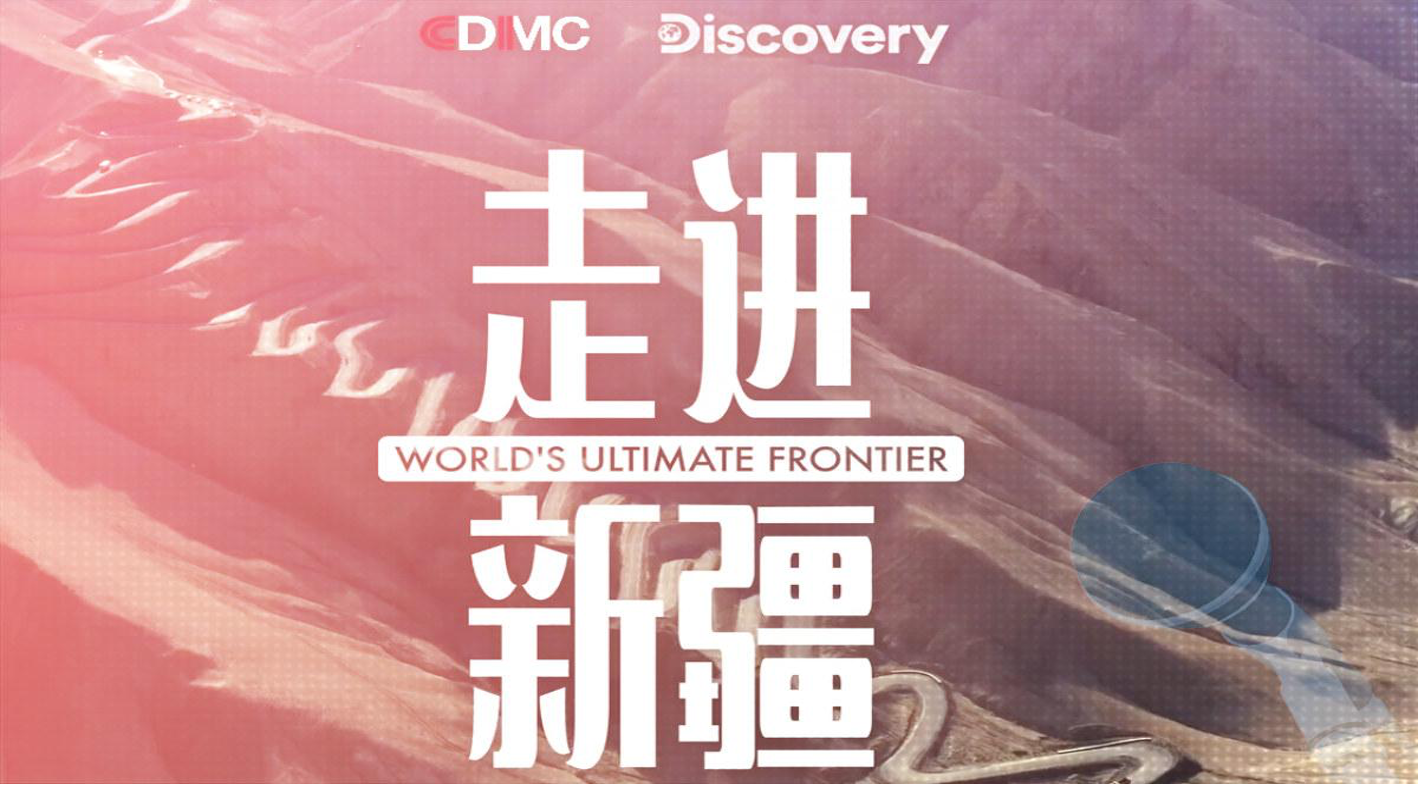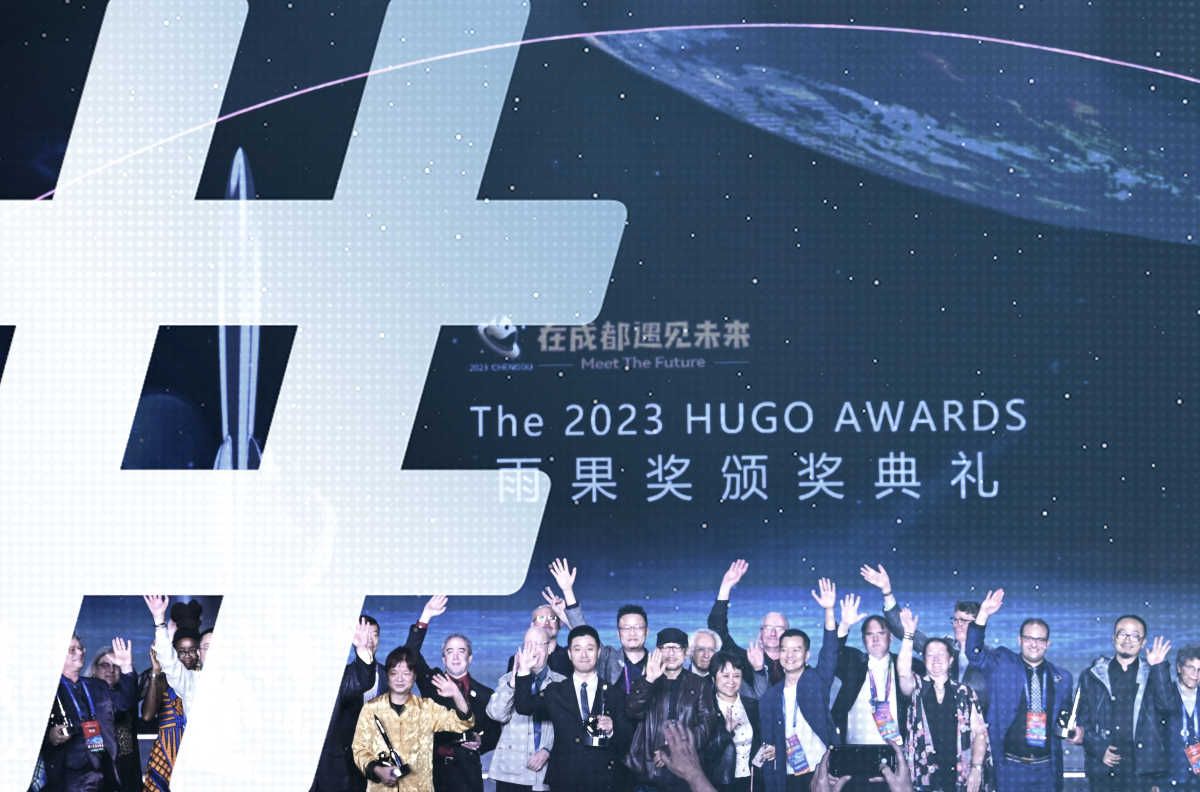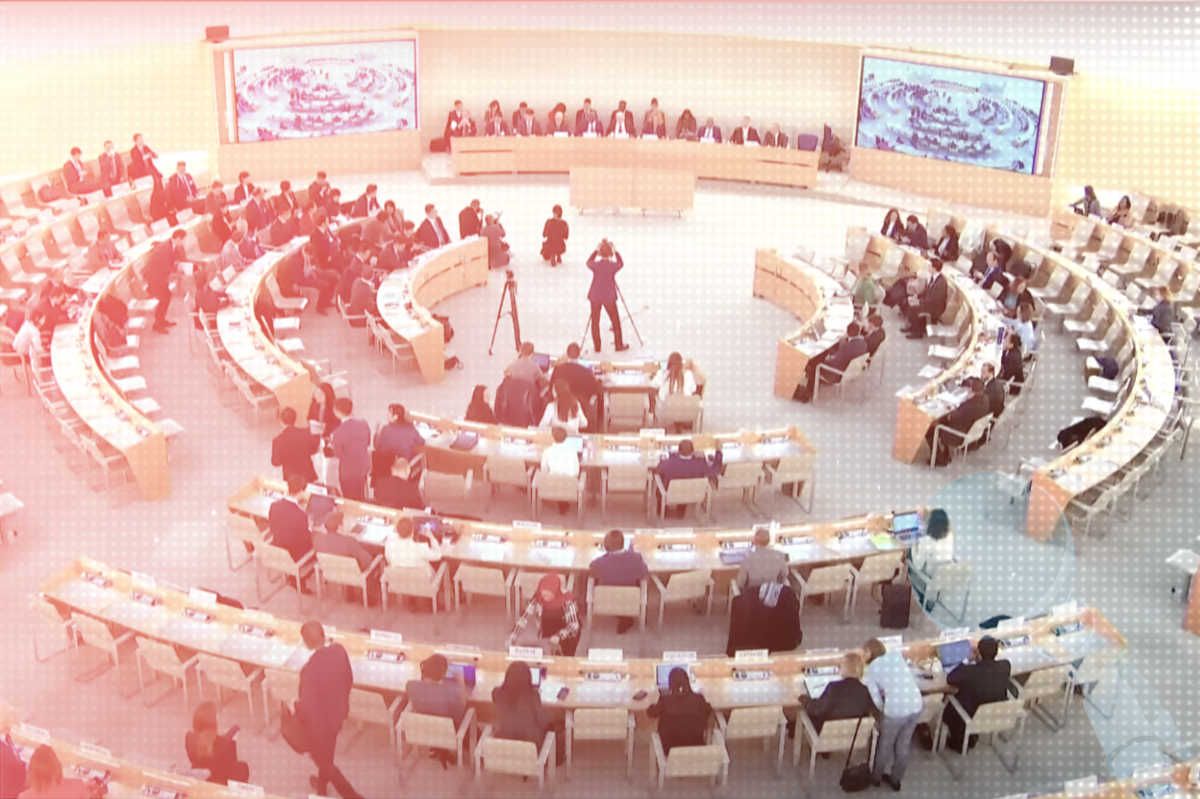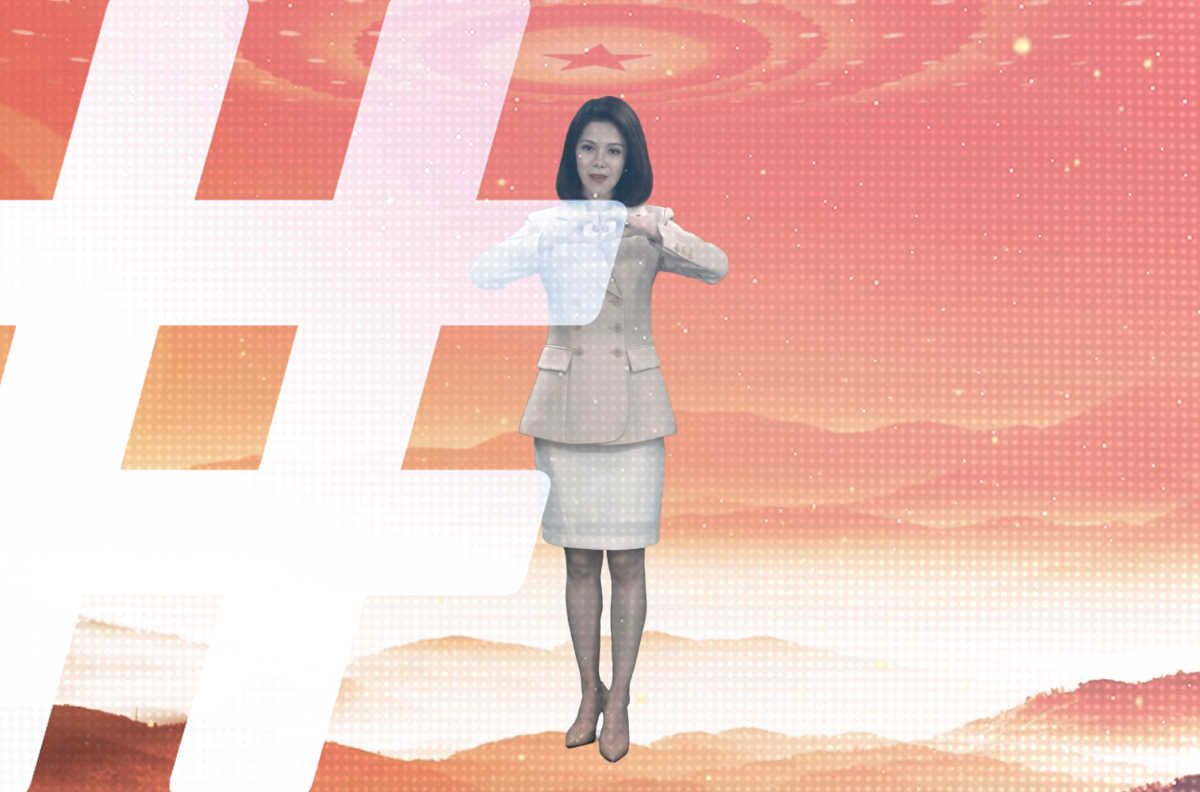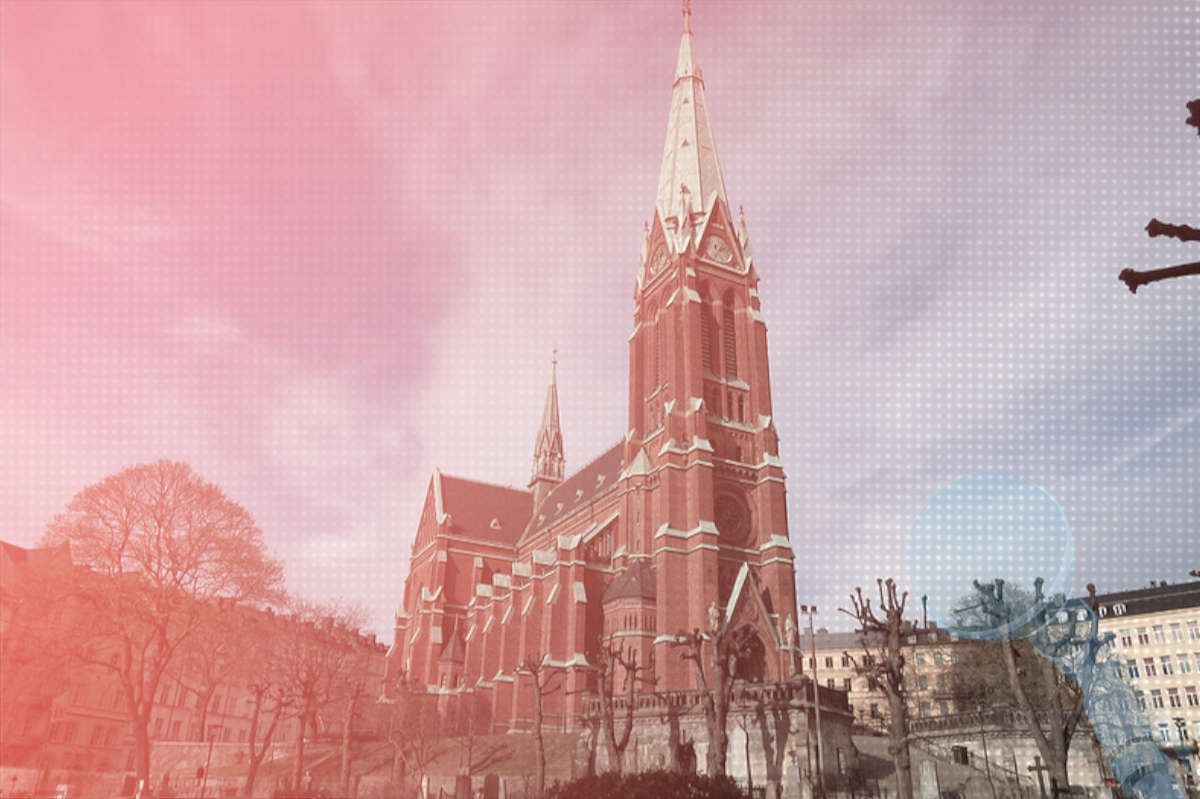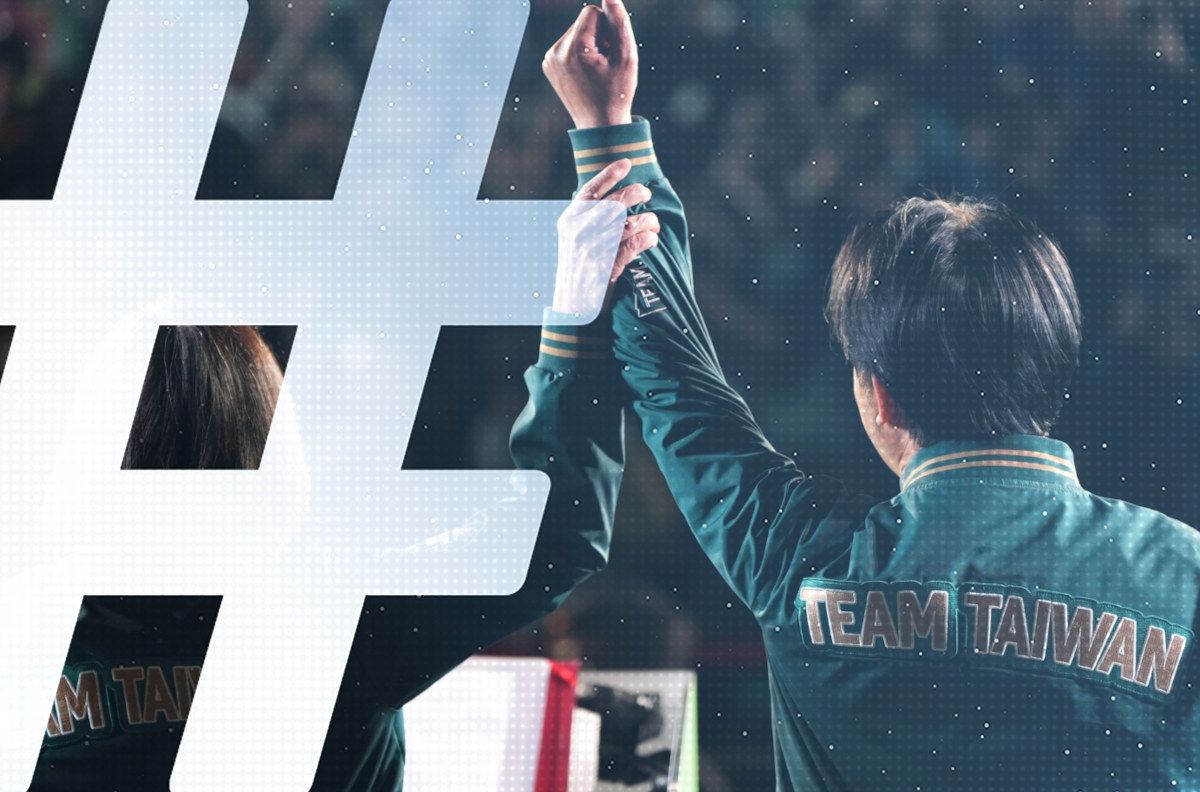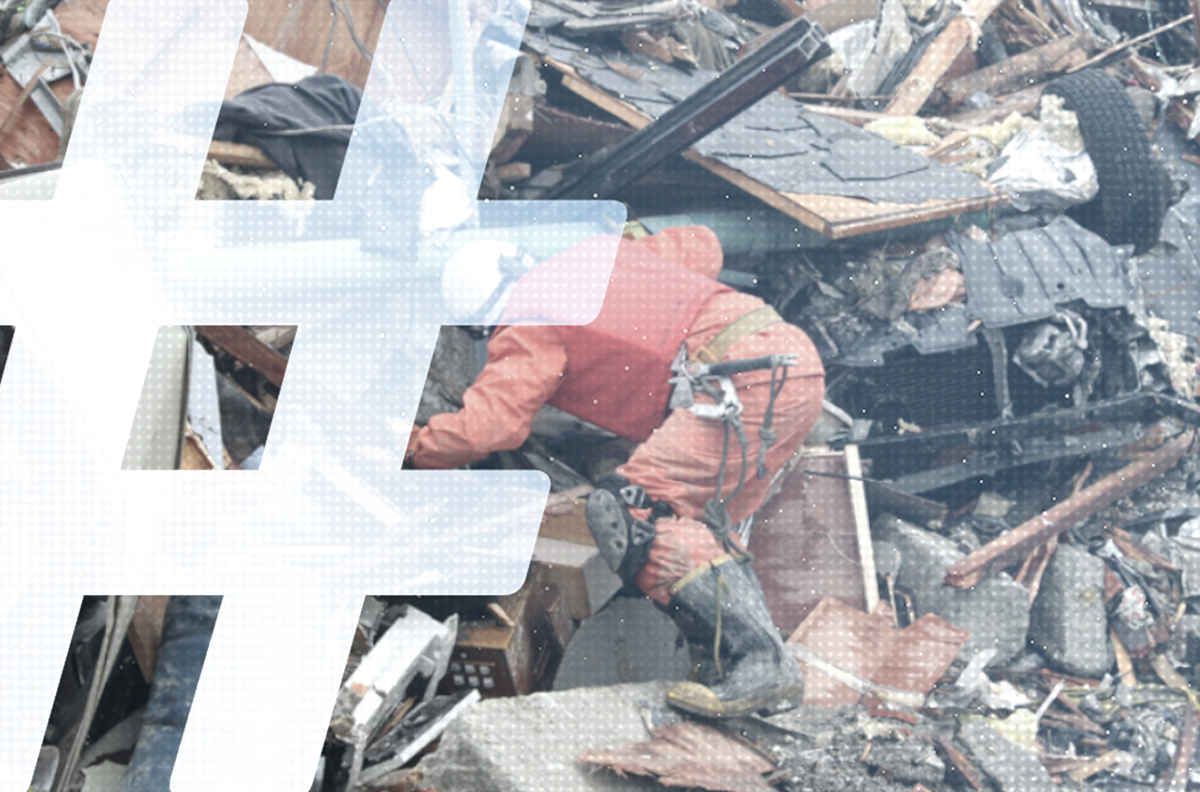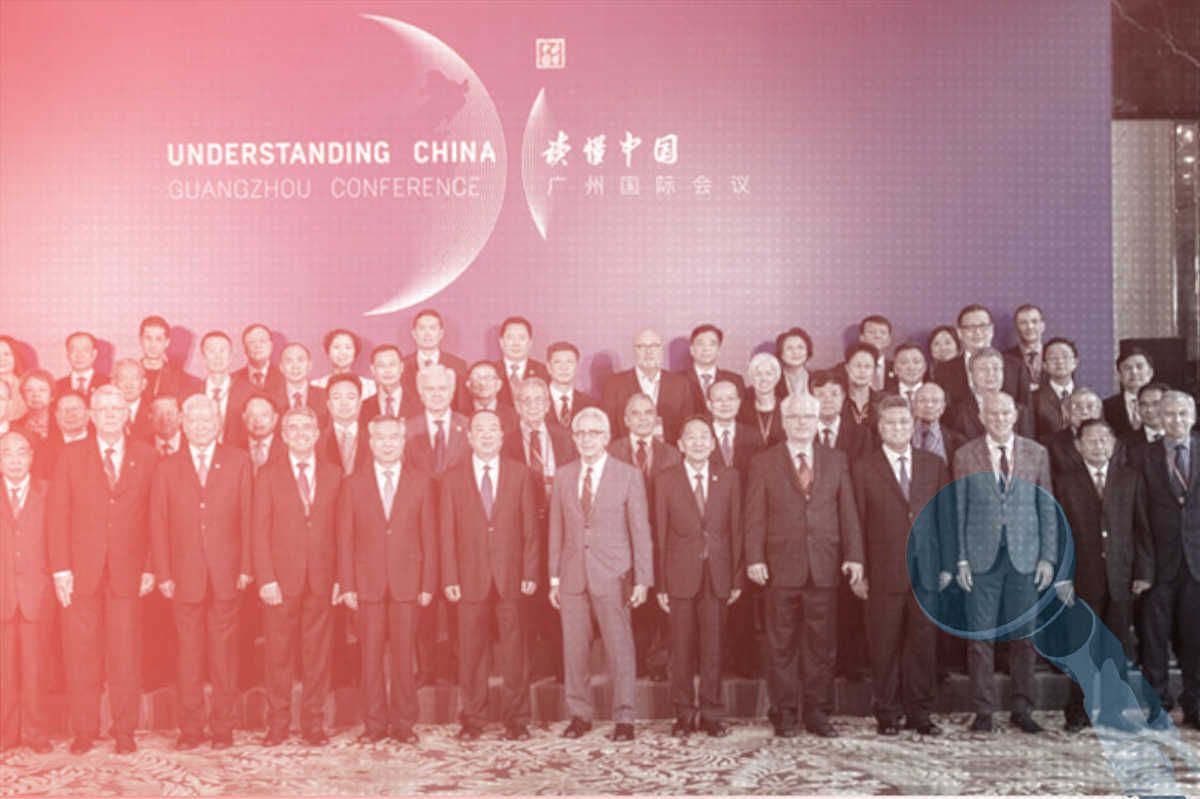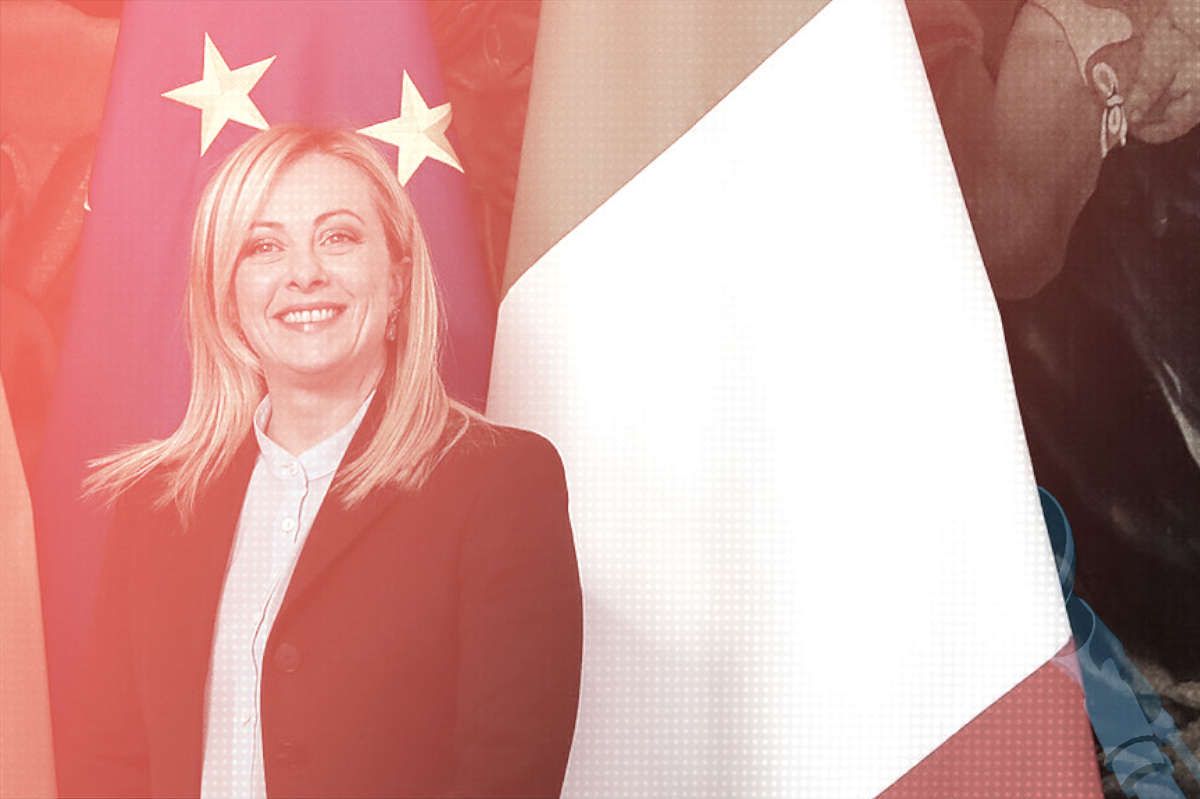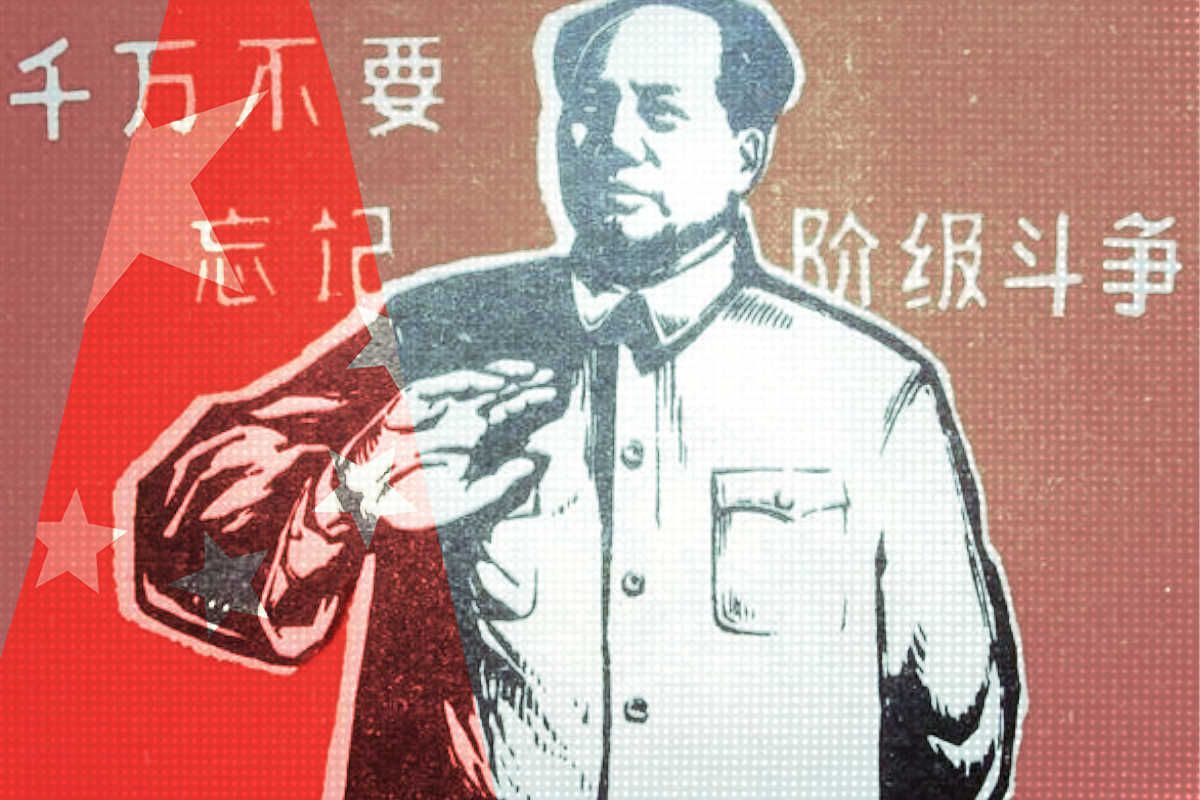Headlines and Hashtags
In modern China, no place for totalitarian anthems
By Qian Gang — How should we best understand the extravagance that marked China’s recent National Day celebrations? In the wake of the pomp and circumstance, a good friend of mine summed it up with a single phrase: “Four portraits and four anthems.” By portraits he was referring of course to the four massive portraits of state leaders – Mao Zedong, Deng Xiaoping, Jiang Zemin and Hu Jintao – that gazed over the celebration.
And four propaganda anthems blared out to reiterate the importance of these CCP lions – “The East is Red” (东方红), “A Story of Spring” (春天的故事), “Into the New Age” (走进新时代) and “Oh, Lovely Land” (江山).
This soundtrack was not an incidental choice. Rather, these songs were representative of each of the “four generations of leaders.” The official Xinhua News Agency even issued a special report called, “Four Anthems Sing of a China Bravely Advancing.”
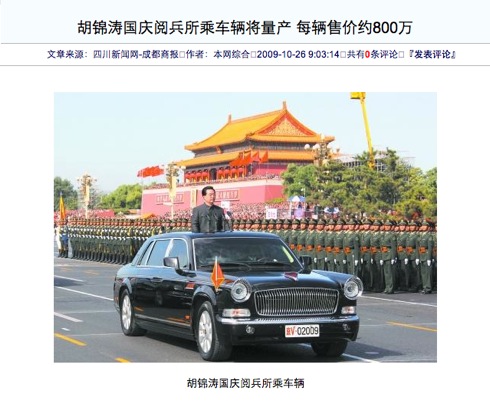
[ABOVE: Screenshot of online news coverage of National Day celebrations, showing President Hu and his motorcade.]
“The East is Red” was of course Chairman Mao’s personal political anthem. But when I was collecting folk songs for a project twenty years ago, I was surprised to discover that the “The East is Red” was originally a romantic ballad. During the Second Sino-Japanese War, it was rendered as the popular song “Riding White Horses”:
Riding white horses,
Armed with Western guns,
Three brothers with the Eighth Route Army
Living on its grain.
They’re thinking of girls back home again.
But fight on against Japan.
In 1944, Shaanxi farmer Li Youyuan (李有源) and a rural schoolteacher appropriated this tune to compose “Migration Song,” which contained the following verse:
The East is red,
The sun, it rises.
And in China, a Mao Zedong is born.
Through further alterations by CCP lyricists, “Migration Song” became “The East is Red.” After 1949 the song gradually became an indispensable part of the cult of Chairman Mao. With each successive round of song, the process of deification intensified. Meanwhile, the perfect and godlike Chairman orchestrated one revolutionary struggle after another, urging the nation deeper and deeper into turmoil.
The reform movement engendered by Deng Xiaoping had its origins in breaking through Mao’s cult of personality and throwing off the yoke of extreme over-concentration of power.
Through the entire decade of the 1980s, veneration of CCP leaders was repressed. There were no grand lyrical tributes to Hu Yaobang and Zhao Ziyang, and songs were rarely sung in praise of Deng Xiaoping at the time.
As an anthem of political praise, “A Story of Spring” was a song very unlike “The East is Red.” Its lyricist, Jiang Kairu (蒋开儒), was an old man who had lived a rough life. As a youth he had joined up with the People’s Liberation Army. But because he was found to have family in Hong Kong, and was therefore tied down by this alleged “overseas connection,” he was eventually forced out of the military and banished to the northeast, the “great northern wilderness” as it was called.
When the Cultural Revolution finally passed, Jiang felt as though Spring had returned. In 1979, Jiang was permitted to come to Hong Kong to reunite with his family. He saw with his own eyes the changes reforms brought to Shenzhen in the years that followed.
In 1992, as Deng Xiaoping made his “southern tour,” Jiang Kairu was moved by the wave of reports in China’s media urging further economic reforms. He was living in Shenzhen at the time, and toward the end of the year he composed “Spring Story”:
1979, a year of Spring
An old man marks out
A circle [of hope] in China’s south.
These are lyrics penned by an ordinary man moved by Deng Xiaoping and the reform movement he represented. But the song gained in popularity only after 1996, as Deng Xiaoping fell gravely ill. It is perhaps impossible to know whether the paramount leader ever even heard “A Story of Spring” before he passed away in February 1997.
By the time Deng passed away, Jiang Kairu was working for the literary and arts federation of Lo Wu, on the Hong Kong-Shenzhen border. In anticipation of Hong Kong’s return to China that year, he wrote a song called “China is Blessed.”
The composer later recalled: “Leaders in Lo Wu excitedly glimpsed an opportunity: a song about three generations of party leaders.”
Local cadres worked together on the song lyrics, and the result quickly drew the attention of top leaders in Shenzhen. Once China Central Television got wind of the song, it was appropriated for a television spot.
Ahead of the 15th National Party Congress held later that year, the song was reworked to become “Into the New Age,” layers of political propaganda thickening over it with each retouching. Even the folk rhythms of Jiang Zemin’s native northern Jiangsu province were incorporated.
By the time the fiftieth anniversary of the People’s Republic of China rolled around in 1999, the song had already become a propaganda anthem symbolic of Jiang Zemin’s leadership. The official People’s Daily praised the song, which it said “shaped the musical images of three generations of party leaders.”
“The East is Red,” we sing,
Standing up on our own.
We share a story of Spring,
We prosper under reform and opening.
He who leads us on the forward road,
Takes us into a bright new age.
“He who leads us on the forward road” was of course a reference to Jiang Zemin. During October 1 celebrations in 1999, “Into the New Age” was reserved for the climax of festivities. This was in fact the first clear instance of political hero worship (个人崇拜) since the onset of China’s economic reform policies, and it stepped way beyond the bounds that Deng Xiaoping had drawn.
Since becoming General Secretary of the CCP, Hu Jintao has invited caution in the assessments of him made by others. In Jiang’s day the media routinely used the phrase, “the central party the core of which is comrade Jiang Zemin.” When the torch passed to Hu Jintao, the language was a touch more cautious: “the central party of which comrade Hu Jintao is general secretary.”
The enthusiastic cheerleading for President Hu during the recent 60th anniversary celebrations was therefore all the more a surprise.
Mao, Deng, Jiang and Hu were all represented together during the festivities. And in fact, the ceremonies included two anthems symbolic of Hu Jintao’s leadership.
“Oh, Lovely Land,” which accompanied the massive portrait of Hu, is perhaps not an anthem in praise of him personally, but praises him indirectly as a leader who “governs for the people”:
The ordinary people are the earth;
The ordinary people are the sky.
“On the Sunny Road,” which Peng Liyuan (彭丽媛) sang over the grandiose fireworks display, was a clear and conscientious choice:
On the sunny road,
In the air the banners soar.
Scientific development and harmony,
Guide China to brighter shores.
“Scientific development” and the “harmonious society” are of course markers of Hu Jintao. They are his political banners.
These four songs — or five — all fall into China’s tradition of what can be called “song politics,” or gequ zhengzhi (歌曲政治). They mark the intersection of high-level power plays and political slogans with the realm of culture and popular entertainment.
They are also relics of the totalitarian era.
“Why have they decided to drag out even our most unsightly assets?” another friend of mine remarked during the celebrations.
In fact, the massive portraits and propaganda songs placed Hu Jintao in a precarious position. Perhaps those charged with crafting and massaging his public persona are still unsure. Perhaps they are testing the waters, and we shouldn’t read anything more into this.
But even if Hu Jintao had no intention of fueling his own cult of personality, that moment of high self-praise has been witnessed already by hundreds of millions of Chinese.
I have no interest in exploring the political machinations that might underlie the parading of these giant portraits and these anthems of political praise. For Chinese today, parsing our political environment is a tiresome exercise. We dwell more on the question of China’s future. We know China must not repeat the mistakes of its past.
And that is why it is time we say goodbye to these unbecoming political traditions.
FURTHER READING:
“Four Songs Tell China Story Over Six Decades,” Xinhua News Agency, October 1, 2009
“China’s National Day parade: public barred from celebrations,” The Guardian, September 30, 2009
[Posted by David Bandurski, October 27, 2009, 10:05am HK]



